Alf Harland: The Irishman who became a Toffee and a Linnet
Hailing from County Tyrone, he had the unenviable task of taking over from Everton's pre-WWI championship-winning goalkeeper, Tom Fern. He went on to make 70 appearances for the Blues
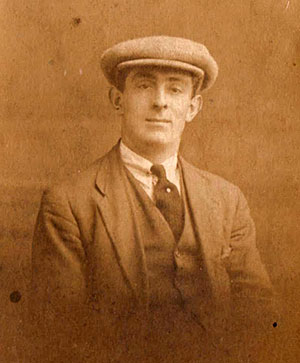
Alf Harland in the 1920s
Filling the boots (and gloves) of a great is one of the hardest things for an aspiring goalkeeper to achieve. At Everton, it was a fate befalling George Burnett and Jimmy O’Neill as Ted Sagar reached veteran stage) in the late 1940s. More recently Paul Gerrard was ostensibly brought in to replace Neville Southall in the mid-1990s, but struggled to dislodge the senior pro. Back in the early 1920s, Northern Irishman Alf Harland had the daunting task of taking over from Tom Fern. Fern had been the 1914/15 championship-winning goalkeeper for the Blues and had resumed competitive football at the end of the First World War, racking up 231 peacetime appearances, in all.
Born on 26 November 1897 in Cookstown, County Tyrone, Alfred Ireland Harland (commonly called Alf or Alfie) was one of eight siblings. Lying about his age, at 14 he enlisted with the 12th Battalion of the Royal Irish Rifles. On the football field he represented Dunmurry FC, where he had future Blues forward and ‘wizard of the dribble’ Bobby Irvine as a teammate. Football was in the blood, his younger brother played for Ballyclare Comrades during the mid-1920s. Having won the Steel Son Sons Cup at Dunmurry Alfe graduated to one of Northern Ireland’s most successful clubs, Linfield, soon after representing the IFA in a junior international played in Glasgow on 28 February 1920.
The 1921/22 season was memorable for the club’s clean sweep of all seven domestic competitions they entered, including the Irish League and Irish Cup, Charity Cup and the Antrim Shield. Alf began the season as second choice goalkeeper, but by the autumn he had replaced former international, Fred McKee in the side. Contemporary photos capture Alf wearing a trademark large cap when guarding his goal.
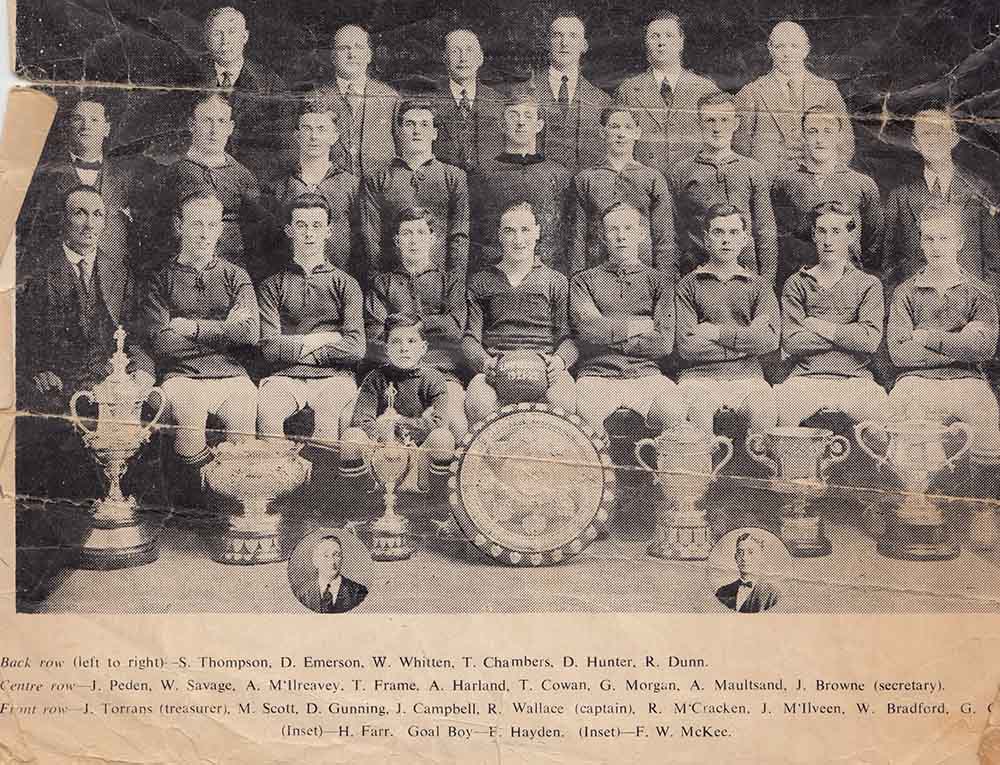
The all conquering Linfield team
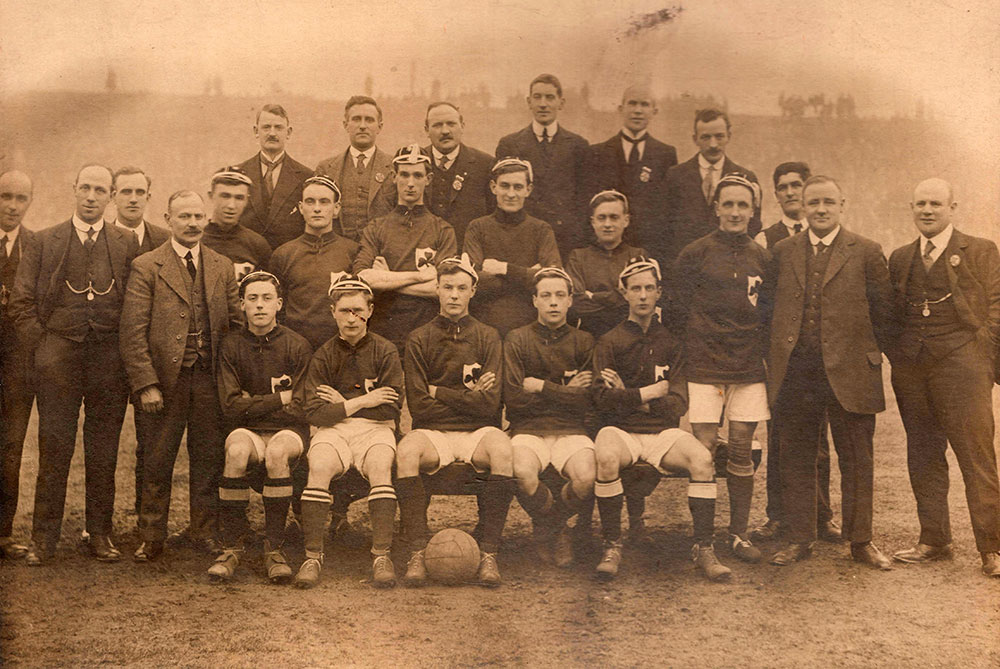
Ireland junior team playing at Firhill Glasgow in 1920
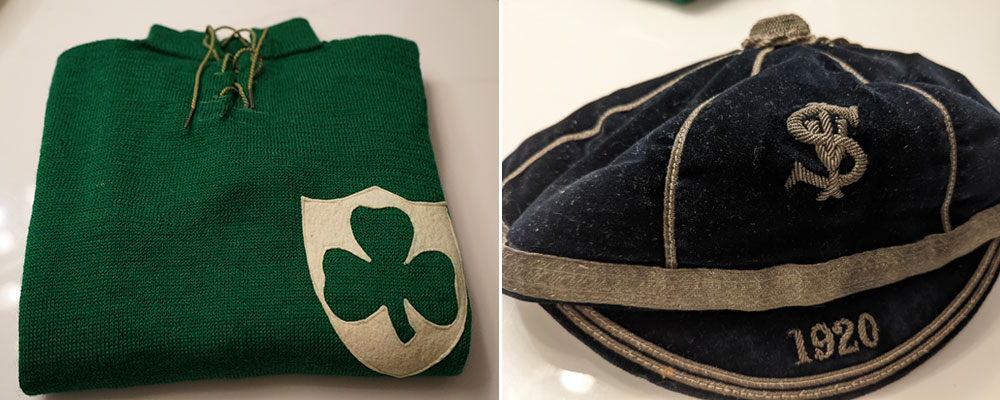
Left: Irish goalkeeper shirt; right: Irish youth cap
In 1922, Alf was capped twice by the Irish Football Association but the enduring excellence of Liverpool’s Elisha Scott (brother of Billy - the Toffees’ custodian when they won the FA Cup in 1906) stopped him from adding to the tally. At the second of two inter-league match appearances, played at Burnden Park, the Evening Express reported on his ‘exceptional skill, especially in dealing with low shots’. Everton director Andrew Coffey had witnessed Alf’s superb display for Ireland at West Bromwich Albion’s ground, so club secretary Tom McIntosh and director Bill Sawyer travelled to Belfast with Coffey to convince both Linfield and their coveted player to agree to a transfer.
The 23-year-old, who was described as being 5ft 10ins and weighing 11st 7lb, duly joined the Toffees for a £1,500 fee (£1,000 less than what Linfield had first demanded) in late October. His debut, within a month of arriving on Merseyside, in place of the injured Fern, was marked by a clean sheet in a narrow 1-0 victory over Arsenal. The Evening Express noted: ‘That Harland is a clever keeper was demonstrated by the manner in which he saved the few shots which came his way. He had very little to do, but when he is more fully tested, I expect him to prove exceptionally skilful.’
He had a run of appearances which ended with injuries sustained in a Valentine’s Day fixture at Stamford Bridge. Alf dived to grab the ball with three opposition forwards in ‘close proximity’. He used his hand to protect his head but took a blow from a heavy boot to both his thumb and his head. He emerged with a clearly badly damaged finger. He was led from the field and reported to be in the changing room with ‘severe shaking’. It only became clear afterwards that he was suffering from severe concussion. Falling unconscious, he was admitted to St George’s Hospital and reported to be unconscious and in a serious condition. A couple of days later, an Echo journalist had arranged to visit Alf’s hospital bedside but was turned away on arrival as the goalkeeper was not yet in a fit state to engage in a proposed ‘little chat’. He eventually recovered and was able to return home.
Tom Fern returned between the posts for the latter stages of that season and remained the first choice for the start of the 1923/24 season, but Alf got another bite at the cherry early in the New Year. He was back in the wars in a match at St James Park in April of that season when knocked out as the Magpies scored their second goal. He had to be taken from the field of play. However, he was revived enough to return for the second half of the 3-1 defeat. He was back playing three days later against Chelsea. A few weeks later, he embarked by train and boat for Barcelona to take part for the Blues in the eponymous cup competition - defeating Newcastle United in the final.
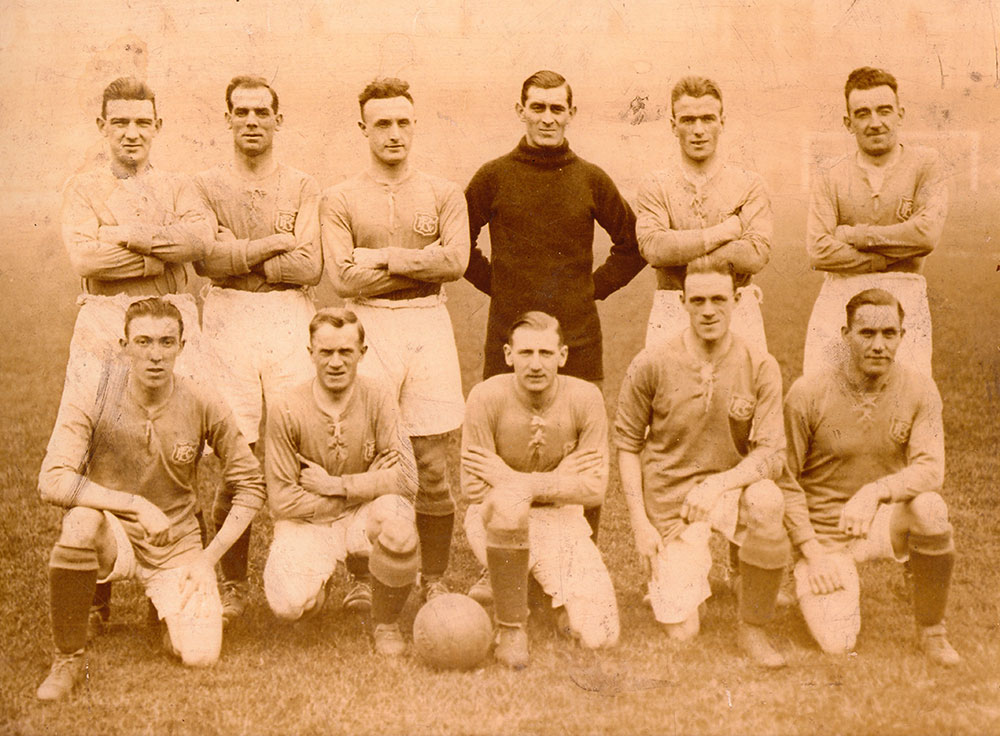
Everton team circa 1924
In the 1924/25 season he had to see off the early challenges of Bob Jones and Jack Kendall before getting the nod on a consistent basis.
In early September, at the Hawthorns, he was off the pitch for over 30 minutes with a leg injury before gamely returning between the posts. With Jack Kendall also injured, Alf was hurried back into action, when probably not fully fit and could not do himself justice. Heavy defeats by Liverpool (with Elisha Scott at the other end) and Huddersfield saw Alf make way for amateur keeper George Menham on 10 October 1925 (ironically, Menham conceded seven against Sunderland). After three matches with Menham (who wore glasses in the warmup but took them off for the 90 minutes of play) acting as the last line of defence, the Blues splashed the cash to bring in Harry Hardy, Stockport County’s England international goalkeeper. Shortly afterwards, the club made it known that Alf and Jack Kendall, amongst other players, would be made available for transfer.
Off the pitch, the Liverpool Echo on 24 December reported on Alf’s betrothal to Doris Looker. The engagement was announced at Doris’s coming–of-age celebration, held at Mersey Mission Institute in Runcorn (her family lived on Bentinck Street). They got married the following year.
Consigned to the Blues’ reserves, Alf had been hospitalised with appendicitis, requiring surgery. Released by the club in the spring, once recovered from his operation, Alf did apply to the Toffees to be re-engaged but the directorate turned down the request. He had made 70 appearances for the Blues, but, at less than 30, the goalkeeper was not finished with football. He joined Runcorn AFC of the Cheshire County League and was promptly appointed team captain once he agreed to stay on for the full season. After retiring from playing, he served on the club’s board for nearly 30 years.
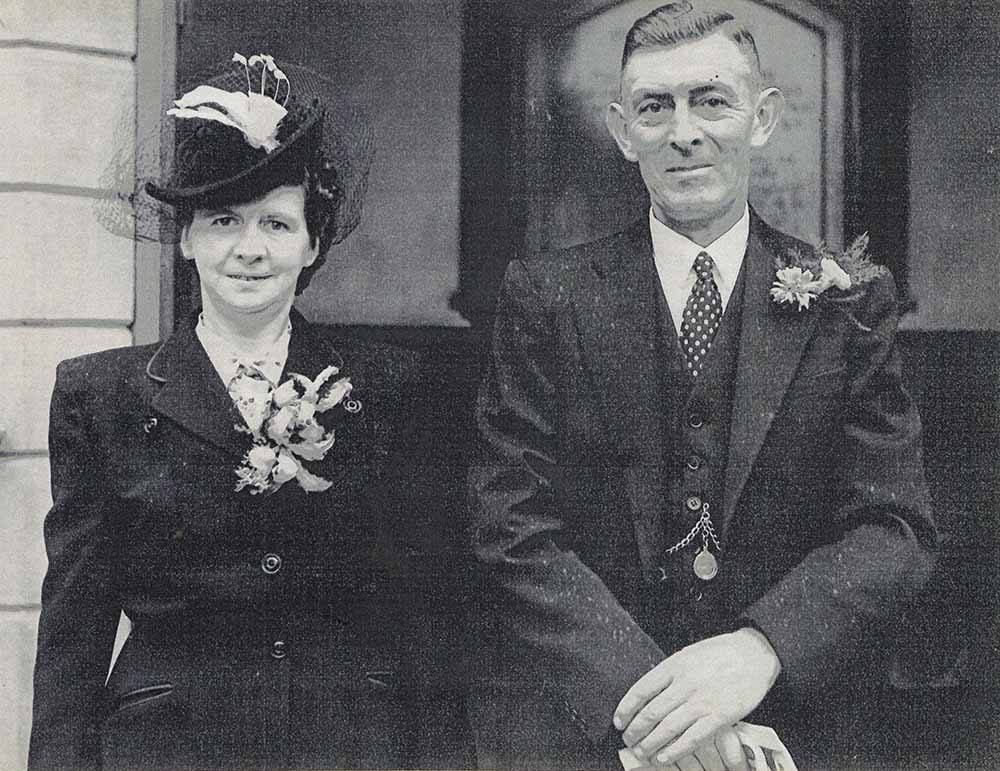
Alf with his wife Doris
The Harlands resided at 4 Gilbert Street in Runcorn, with Alf employed as a gas main layer. The couple had one son (Alf Junior) and two daughters, Bessie and Reta. Bessie, when six years of age, was lucky to survive a fall into the Bridgewater Canal near some lock gates - a passer-by and expert swimmer dived in, fully-clothed, to save the day. Alf Jr. was a keen swimmer and took up water polo. He would become a noted coach and administrator in these circles. He also gave swimming lessons at Runcorn public swimming baths.
In 1949, Alf sr. became the landlord of The Darwell Vaults public house on Doris’ home street (Bentinck Street) and, later, ran the Bridge Hotel in Ashridge Street (which would subsequently stand in the shadow of the giant road bridge, built in 1959 to replace the transporter bridge over the Mersey). His Toffees career overlapped with that of Dixie Dean, and he would have his former clubmate over to Runcorn on several occasions for fundraising functions, which always drew a crowd - this included a fundraising dance for Runcorn Cottage Hospital in 1935, held at the local swimming baths. It was reported that so many children turned up to see the legendary goalscorer that Dean gave an impromptu talk to them about football in an annex of the building, for 1d per head (with an autograph included). Alf also kept in touch with Harry Cooke, the Toffees highly-rated trainer.
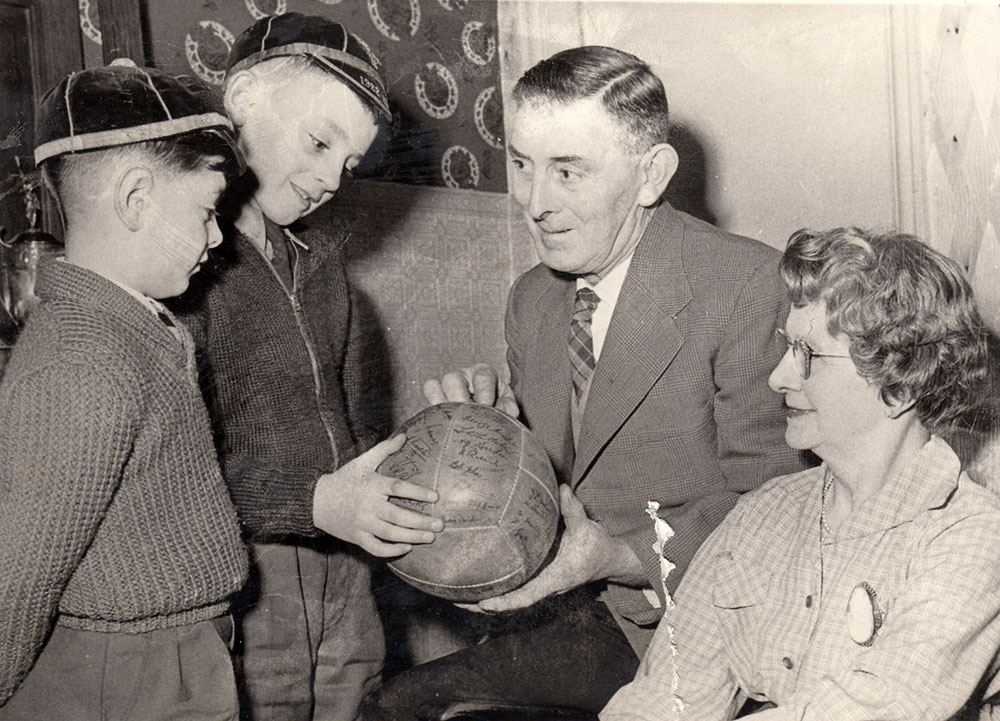
Alf and Doris showing their grandsons a signed football
In later life, Alf would occasionally send a football to the FA, asking that that year’s cup finalists sign it and send it back for him to keep as a treasured possession. Not long after giving up the licence of the Bridge Hotel, Alf’s health deteriorated and he was hospitalised at Barrymore Hospital, near Chester. He died there on 20 May 1968, aged 70 and was laid to rest at Runcorn Cemetery. Some years later, his widow Doris and sister Loretta (over from Australia) attended a match at Goodison Park and were given the VIP treatment by the club, with an announcement about their presence being made over the Tannoy.
Graham Abel, followed in his grandfather’s footsteps (albeit not as a goalkeeper) by playing professional football for Chester City and Crewe Alexandra.
Acknowledgments
Graham and Bessie Abel and the rest of the Harland family
Stuart Allen (Facebook article)
evertonresults.com
bluecorrespondent.co.uk
https://nifootball.blogspot.com/2006/12/alfie-harland.html
Reader Comments (2)
Note: the following content is not moderated or vetted by the site owners at the time of submission. Comments are the responsibility of the poster. Disclaimer ()
2 Posted 24/03/2024 at 08:32:08
It is always difficult to replace a legend. Whoever followed Southall was going to struggle and be subject to cynicism. Likewise, Schmeichel senior at Manchester United.
I played against Dunmurry.
Not the worse.
The most intriguing one was Donegal Celtic, based in Belfast despite the name. They turned up on the coach and refused to use the changing room facilities. They got changed on the coach and stepped out in their Celtic colours. Straight after the match they walked back onto their coach in their kit rather than come for some food and a drink!
Well, once their players heard mine and my centre back partners, we were targeted.
A young striker came in and tried to smash me.
I told him to grow up and if he wanted some, he would get it.
I smashed him back just after and had a word in his ear. He didn't come near me again.
I went to Cookstown regularly. It was okay. Coalisland was more intimidating as they used to have spotters watching us at the cafe on the roundabout. Not as bad as Crossmaglen though!
I digress. Great story Rob. Thank you.
Add Your Comments
In order to post a comment, you need to be logged in as a registered user of the site.
Or Sign up as a ToffeeWeb Member — it's free, takes just a few minutes and will allow you to post your comments on articles and Talking Points submissions across the site.
How to get rid of these ads and support TW








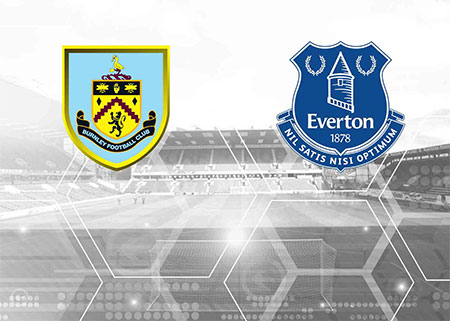


1 Posted 22/03/2024 at 15:57:30